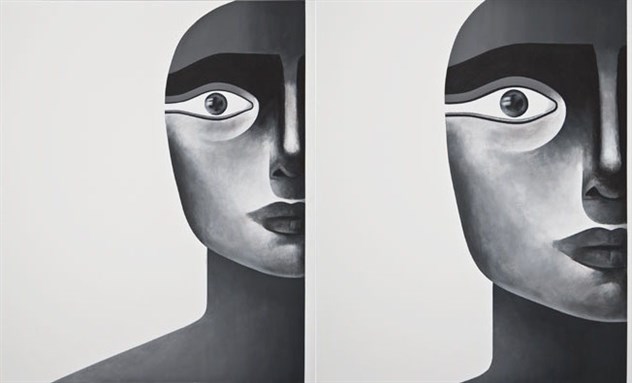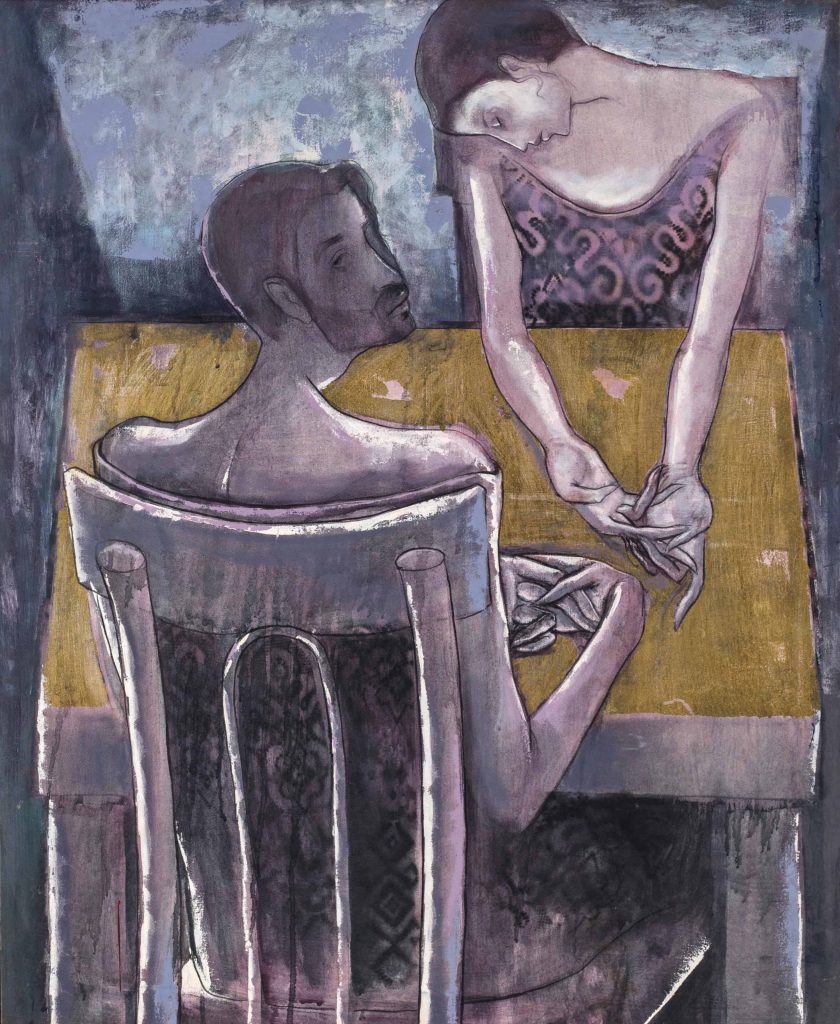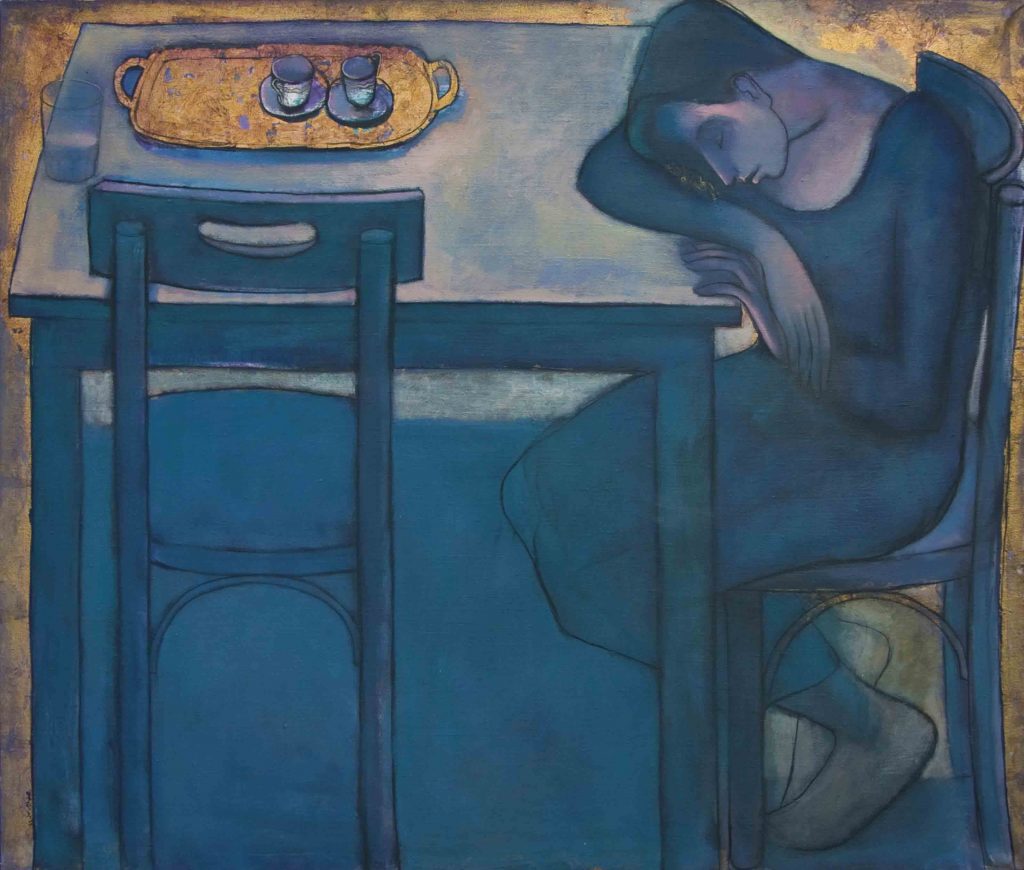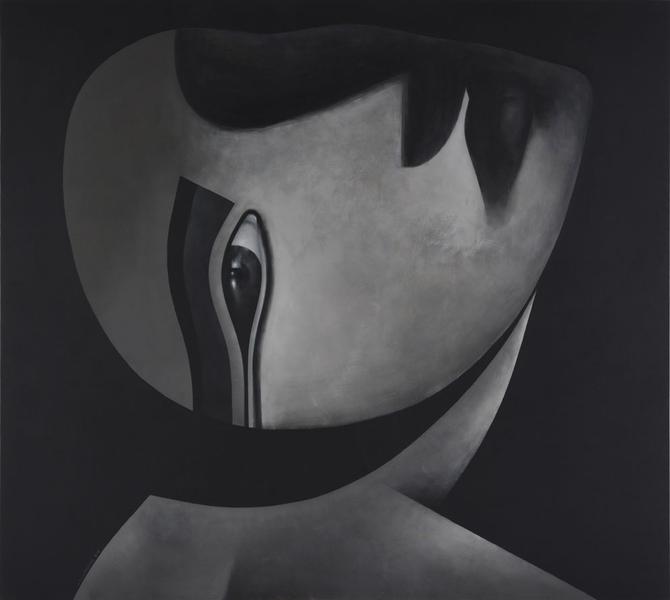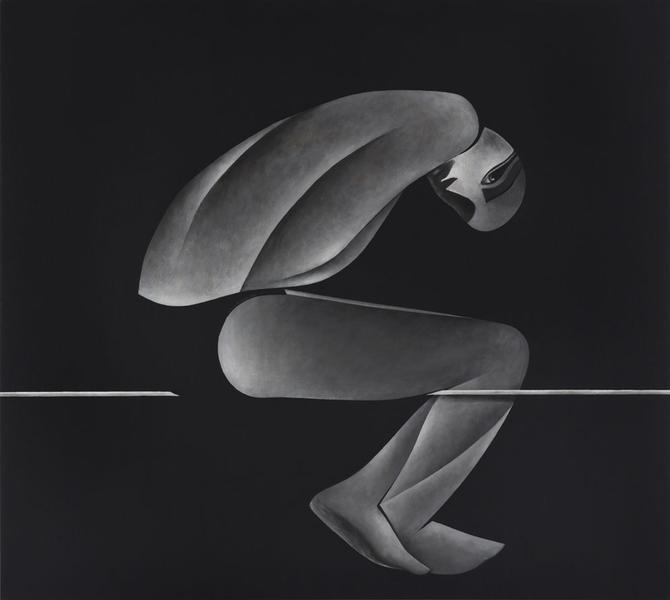Artist Spotlight: Safwan Dahoul
With a career spanning over three decades, Safwan Dahoul (b. 1961) is one of the Arab world’s most renowned and internationally recognised painters. His oeuvre combines elements from the Assyrian, Pharaonic, and Cubist periods. Albeit experimenting with a variety of painting styles and techniques, Dahoul has never failed to maintain a distinctive artistic identity.
Rêve, 1995, 93.4 x 77cm. Image courtesy of Christie’s.
Often championed as his most desirable period, Dahoul’s works from the 1990s depict intimate and dreamlike portraits which combine the figurative and the abstract. Partly auto-biographical, these domestic scenes look at acts of comfort, vulnerability and companionship during times of crisis.
Rêve, 1992, 120 x 100cm. Image courtesy of Christie’s.
Rêve, 1992 depicts a lone female figure who has fallen asleep at a dining room table. There are two empty cups left next to her, suggesting that she had company not long ago. The blue undertones across this work convey a sense of melancholy and emptiness, which piques our empathy as well as intrigue for the sitter and her life story.
Dream 151, 2017, Acrylic on canvas, 180 x 200cm. Image courtesy of Ayyam Gallery.
Dahoul’s most recent ‘Dream’ series continue the use of a female protagonist. Yet, one who is more abstracted and geometrical in comparison to her predecessors. These works are executed in monochrome, accentuating a shift in the artist’s mood and focus. The close-up perspective brings attention to the subject’s sorrowful and mysterious gaze, which looks directly at the viewer. While also having sensuality and allure, she challenges various social, political and cultural oppressions. In particular, the Arab culture’s attitudes towards and expectations of women.
Dream 152, 2017, Acrylic on canvas, 180 x 200cm. Image courtesy of Ayyam Gallery.
Born in Hama, Syria, Dahoul studied fine art in Damascus, before moving to Belgium for a doctorate degree. He then returned to Syria and taught at the Faculty of Fine Arts, University of Damascus. In 2012, at the face of the Syrian Civil War, he moved to Dubai, which became his long term home and the locus for the next stage in his artistic practice.
Selected exhibitions
Ayyam Gallery, Dubai; Busan Museum of Art, South Korea; Edge of Arabia, London; Institut du Monde Arabe, Paris.
Selected collections
Institut du Monde Arabe, Paris; Barjeel Art Foundation, Sharjah; National Museum, Damascus; The Samawi Collection, Dubai; The Farjam Collection, Dubai; Arab Fund for Economic and Social Development, Kuwait.
